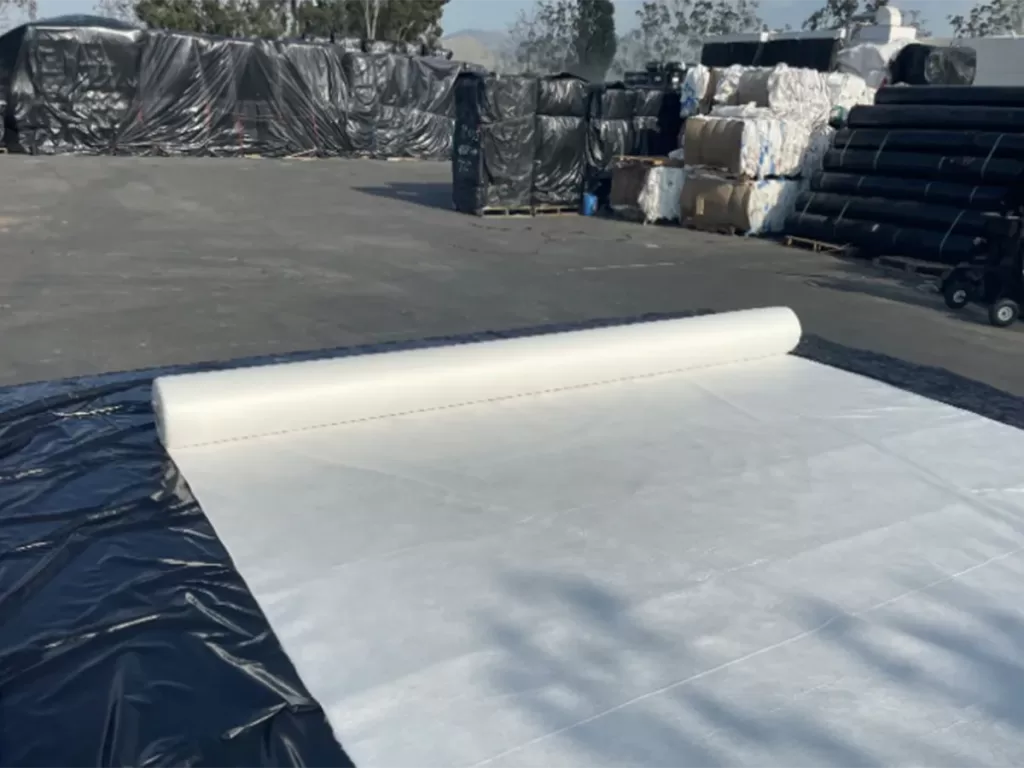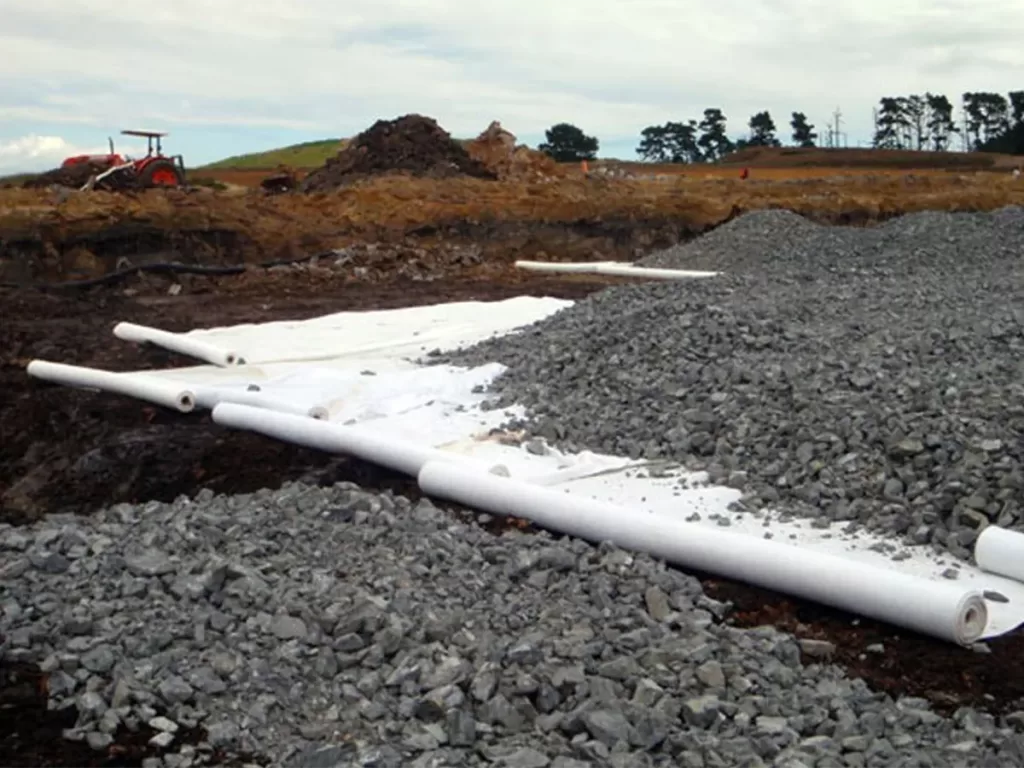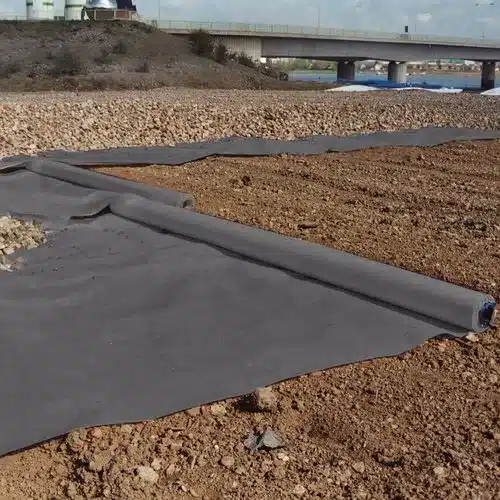+86-159 9860 6917
info@geofantex.com
geofantex@gmail.com
+86-400-8266163-44899
Geosynthetics in road construction represents a transformative solution to bolster road infrastructure’s resilience and longevity. These specialized materials, encompassing geotextiles, geogrids, and geocells, play a pivotal role in addressing diverse road engineering challenges. Geosynthetics, strategically integrated within the construction process, serve multifaceted purposes: reinforcing weak subgrades, preventing soil erosion, ensuring structural integrity, and enhancing load-bearing capacities. By acting as barriers against soil movement, they maintain the integrity of road layers, minimizing deformation and crack propagation. Moreover, their versatile functions extend to stabilizing soil, controlling drainage, and offering cost-effective yet durable solutions. Geosynthetics revolutionize road construction, not just enhancing durability but also reducing maintenance needs and costs while promoting safer and more reliable transportation networks.

Why geosynthetics is used in road construction?
Geosynthetics play a pivotal role in road construction, leveraging their multifaceted advantages. They offer reinforcement, separation, filtration, drainage, and erosion control, effectively tackling various challenges encountered in road engineering. Notably, these materials safeguard the structural integrity of the slab and prevent the granular sub-base material from slipping into the weak substrate. Through these functions, they significantly extend the lifespan and optimize the performance of roads, simultaneously curtailing maintenance requirements and costs.
Geosynthetics are extensively used in road construction due to several advantages they offer:
- Enhanced Strength and Stability: Geosynthetics reinforce the structural integrity of roads, distributing loads and reducing stress on the base materials. This results in increased strength and stability of the roadbed, especially in areas with weak or problematic soils.
- Improved Drainage: Geosynthetics aid in effective drainage by preventing water accumulation within the road layers. This helps in minimizing water-induced damage such as erosion, frost heave, and weakening of the road structure.
- Longevity and Durability: By acting as a barrier against moisture, chemicals, and abrasion, geosynthetics extend the lifespan of roads. They reduce the impact of environmental factors and traffic loads, contributing to durable road construction.
What is the use of geotextile inroads?
Geotextiles, crafted from synthetic fibers, serve as permeable fabrics extensively employed in road construction for various critical functions:
- Separation: Geotextiles excel in averting the amalgamation of distinct soil layers, such as aggregates and subgrade. By ensuring the separation and stabilization of these materials, they uphold the structural integrity of the construction.
- Filtration: These fabrics permit the passage of water while obstructing soil particle movement. Acting as proficient filters, geotextiles prevent drainage system blockages and maintain soil stability.
- Reinforcement: Geotextiles play a pivotal role in reinforcing feeble soils, augmenting their load-bearing capacity, and diminishing settlement. This reinforcement substantially bolsters the road’s overall performance.
What is geogrid in road construction?
Geogrids are high-strength materials used to reinforce soil, providing structural support in road construction. Placed within the soil layers, they distribute loads more evenly, reducing deformation and enhancing the road’s bearing capacity. Moreover, Geogrids are used to build a construction platform over weak subgrades to carry equipment and facilitate the construction of the pavement system without excessive deformations of the subgrade. Geogrids effectively mitigate cracking and increase the road’s lifespan by preventing the propagation of cracks.
What is the use of Geocell in road construction?
Geocells are three-dimensional honeycomb-like structures made from interconnected panels, that serve as a foundation for roads by being filled with soil, creating a robust and stable base. These structures play a multifaceted role: they reduce erosion, stabilize soil, protect channels, and provide structural reinforcement for load support and earth retention. By offering superb load distribution, geocells not only prevent soil erosion but also significantly enhance the road’s stability.
Geocells are three-dimensional honeycomb-like structures made from high-density polyethylene and find applications in road construction for:
- Soil Stabilization: Geocells confine and stabilize infill materials, such as aggregate or soil, within their cellular structure. This creates a rigid mattress that improves load distribution and reduces lateral movement, enhancing the road’s stability.
- Slope Protection: They are employed in erosion control and slope protection by preventing soil erosion and promoting vegetation growth, thereby ensuring the long-term stability of embankments and road slopes.

The utilization of geosynthetics marks a paradigm shift in the realm of road construction. These materials not only bolster the structural integrity of roads but also contribute significantly to sustainability efforts by reducing maintenance requirements and prolonging the lifespan of infrastructure. As technology advances, the role of geosynthetics in road construction is poised to further evolve, ensuring safer, more resilient, and longer-lasting road networks for the future.



Get Free Sample
We’ll respond as soon as possible(within 12 hours)






















